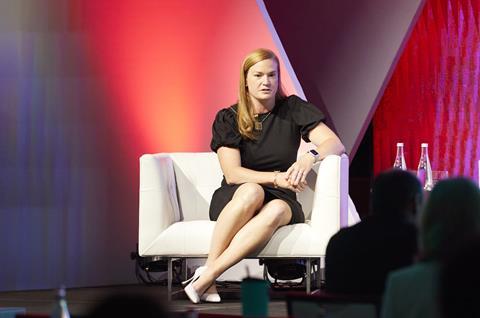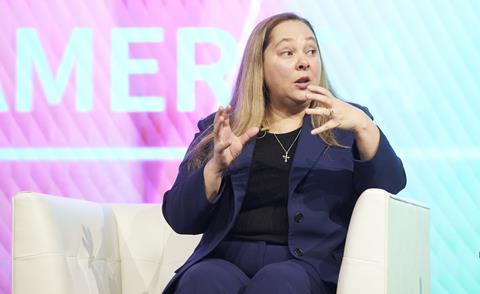As vehicle production recovers in North America carmakers with ambitious plans to recover lead time and rebuild inventory are struggling with capacity constraints across every transport mode.
One of those carmakers is Nissan and according to its director of finished vehicle logistics and supply chain systems and strategy, Jennifer Sarah Bolton, the carmaker is thinking outside the box to deal with the disruption and plan for the future.

According to Bolton, who was speaking at this year’s Finished Vehicle Logistics North America conference in California, what the automotive industry has done to deliver its vehicles over the past 30 years is not necessarily what it will be doing for the next 30.
For one thing, Nissan is changing its bidding strategy for trucking lanes from one based on state boundaries to one based on population and dealerships.
“If you were [previously] being awarded our business you would [for example] take on the entire state of Virginia,” said Bolton. “We are not doing that anymore. We are going to be bidding by population clusters that align to our dealership network.”
Bolton said that change was about getting win-win contracts with carriers from which both parties benefitted. Furthermore, it is based on better data transparency, another priority for carmakers trying to make deliveries more efficient.
“If we can find out where carriers might have a backhaul, where something we are doing fits nicely in their network, that is an advantage to them and us, [and is] something that increases efficiency,” she said.
However, it is also to do with price. Efficiency equates with stability in capacity planning from the carrier perspective, as Sarah Amico, executive chairperson at Jack Cooper, one of North America’s biggest finished vehicle haulaway providers made clear. Amico said vehicle logistics was “the ultimate network economics industry” but that without a mutually beneficial pricing structure, carriers faced losing at both ends of the delivery and backhaul.
Amico said there had to be greater shared understanding on the terms of the contract to make sure carriers had enough transparency on pricing based on an understanding of the network design.
Revise the pricing
For Bolton, pricing was also something to be thought of outside the box because of added pressure on timely deliveries to the dealer network at a time of low inventory and lagging lead times.
“We care so much about lead time but traditionally a lot of the contracts in the industry are not structured so that there are incentives to pay more if [deliveries] are urgent, other than on the spot market,” she said, adding that pricing structures needed revision because on certain inconvenient routes under the state-bidding strategy the carmaker ended up paying more anyway.
“If we bid out a state and there are some dealers that are incredibly inconvenient for the carriers, those carriers will not take [the vehicles] and they will sit and age,” said Bolton. When they get up to 15 days of ageing we have to pay for a backup carrier, so we are paying more anyway.”
Bolton said that Nissan preferred bidding those dealers to a different carrier at a higher price to get the timeliness in delivery it needed. That bidding strategy relied on greater transparency and trust between the carmaker and its carriers.
Greater transparency
Amico said Jack Cooper was also looking at greater transparency and the creation of real-time data flow for its customers. The company has put together a dashboard for customers that tracks in real time an outbound shipment’s status and allows the customer to get detailed information on any specific units that are at risk of not meeting delivery expectations. Amico said that providing fast real-time information flows for customers will improve the discussions Jack Cooper has with its customers and help both manage the transformation of the outbound supply chain in the years to come.
“The supply chain that is never going back to what it looked like before Covid, there is no going back to normal. We are creating the new normal in real time,” she said.
Bolton also recognised the merits of sharing real-time data and said Nissan had that in its network.
“We are moving from stage one where we understand the data to stage two, where we use the data to be proactive and do things with it. It is very exciting,” she said.
What is important for the sector as a whole is to join up the information being made available and fill in the gaps.
“There is some industry data out there through [the Automotive Logistics Executive Committe, or ALEC Group], which we are attempting to use to help our network,” said Bolton.
The council facilitates vehicle distribution across the US but OEMs need to put plans together for better visibility of vehicle supply and they need to begin by establishing shared KPIs on delivery to scope out where they can coordinate on shipments.
“The more industry data we have the more we can make decisions that don’t just help Nissan but help our carriers, and also help velocity of asset utilisation throughout the network, which will help everyone.”
Click here for more on FVL North America and to register for 2024


























![Global[1]](https://d3n5uof8vony13.cloudfront.net/Pictures/web/a/d/s/global1_726550.svgz)














No comments yet